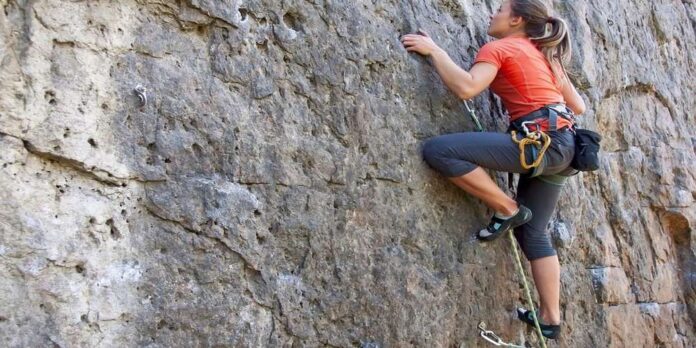You don’t just climb a rock. Some techniques were used to help you reach the top. Before climbing, you should first know the different rock climbing moves. If you know a lot of different climbing techniques, you can solve problems and take on harder routes. We have listed some of them below—one of these moves may be your stepping stone to reaching the top.
Back Step
The opposite of a normal step is a back step. Instead of putting your big toe on hold and keeping your hips square to the wall, you turn your hip to the side and put your little toe on hold.
Back-stepping helps you get your hips close to the wall, which makes straightening your arms much easier and take a break. It can also give you enough length to reach a hard-to-get hold. Back steps are a great way to save energy on steep and overhanging routes.
Stemming
When you stem, you push against two different surfaces. This could be in a corner, a chimney, or a flat wall with a big feature that sticks out.
You can use any combination of your hands and feet to stem, but the key to staying in balance is to use counter pressure. Stemming uses your strong and huge leg muscles, so it’s an effective approach to climb that can give you some rest.
Flagging
Flagging is when you use a limb in shifting your weight, so you don’t fall over. The goal is to stay within the rock.
Flagging is helpful when all the holds you’re using are on the same side of your body. Because that puts all your weight on one side, you swing that leg out to the other side of your body to stay balanced.
Lay-backing
When you “lay back,” you pull and lean against one side of a flake or crack while pressing your feet on the opposite side. Laybacks are highly effective when you have solid footholds since your arms are straight and your feet do the heavy lifting. Keep your heels low to maximize the amount of rubber against the rock when you have to scramble since there aren’t any decent footholds.
Anytime you are in a crack and you cannot jam, or you have a wall to push up against on the other side, like in a dihedral crack, you can use a lay-back.
Undercling
As the name suggests, an undercling is when you use the underside of a grip. It may seem counter-intuitive to utilize underclings at first because you are pulling up on the grip rather than down.
One of the keys to being able to underclimb is finding strong, high footholds. This is because you can keep your body tension by pushing with your feet as you pull on the hold. By keeping your feet up, you can keep your arms straighter, and the grasp will be at about waist level.
A proper undercling puts you in a strong position to reach for more elevation.
Learn more about rock climbing techniques and moves from an experienced adventurer and explorer, Oliver. He can help you not only with rock climbing but also with other outdoor activities.












